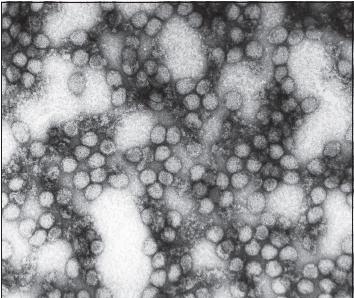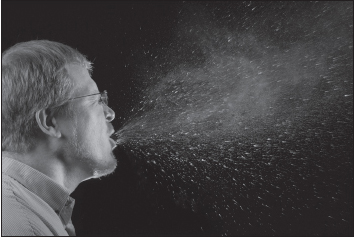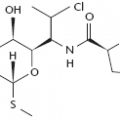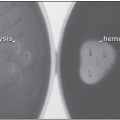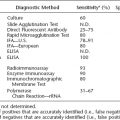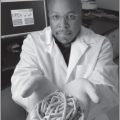Major Concepts
Infectious Agents
Several types of infectious agents are described in this chapter. Viruses are obligate intracellular parasites whose small size enables them to pass through most filters. They exist on the border between life and nonlife in that they are not capable of carrying out many of the processes normally associated with living organisms by themselves. Bacteria compose the majority of prokaryotic organisms and are surrounded by cell walls containing peptidoglycan. They are subdivided in several ways, including by shape (round to oval cocci, rod-shaped bacilli, and corkscrew-shaped spirochetes) and staining characteristics (gram-positive, gram-negative, acid-fast). Protozoa are unicellular eukaryotic organisms whose cell wall, if present, does not contain chitin or cellulose. Their ranks include some of the major killers of the residents of tropical regions, including the well-known malaria and the less publicized schistosomiasis. Prions are nonliving, infectious proteinaceous particles. They are misfolded forms of normal cellular proteins that replicate by inducing the normal form of the protein to refold into the prion form. They lack RNA and DNA. All of these infectious agents have developed means of slipping past the skin and mucous membrane barriers of humans to gain entry into their host.
The Production of Protein and Generation of Genetic Diversity
DNA encodes the genetic information of most forms of life. It serves as a template for the production of RNA, which is in turn the code for the production of the proteins that provide much of the structure and direct most activities of organisms. A small group of the viruses that use RNA to store their genetic code must use this RNA as a template for the production of their DNA. HIV is one such virus. This unusual extra step in protein production is the target of some of the drugs used to treat AIDS. Changes in the structure of DNA lead to changes in the structure and functions of proteins, often leading to fundamental changes in the organism. Mutations are one way in which the structure of DNA is altered. Most mutations are detrimental to the organism and may result in decreased chance of survival. In rare instances, however, mutations may lead to a survival advantage. HIV and influenza viruses use a rapid rate of mutation to evade the host immune system as well as drugs and vaccines. Other means of changing the structure of DNA and thus increasing the species’ genetic diversity include conjugation, transformation, acquisition of plasmids, and transduction in bacteria. Some viruses have error-prone replication enzymes and fail to correct their mistakes.
The Human Immune System
The human immune system may be divided into adaptive and innate branches. The activity of the adaptive branch is slow to develop but provides a powerful defense targeted very specifically to the present threat. It acts more rapidly and vigorously with repeated exposures to the same microbe. Cell types involved are the B and T lymphocytes, which kill cells infected by microbes and produce five classes of antibodies as well as many of the cytokines that regulate the immune response. The innate branch of the immune system is believed to be more ancient than the adaptive branch. It is faster-acting and nonspecific, each cell responding to a large number of threats. Innate immunity does not improve with subsequent exposures to the threatening agent. Cell types involved include neutrophils, monocytes and macrophages, dendritic cells, natural killer cells, eosinophils, basophils, and mast cells. Some of their actions include ingestion and killing of microbes, killing of infected cells, killing of parasitic worms, and production of allergic reactions. Over the course of history, many microbes have evolved means of evading various components of the immune system. In response, humans have produced additional defensive components such as the adaptive immune system. Throughout time, microbes and humans have continued to evolve new offensive and defensive strategies, each side gaining a temporary advantage but neither achieving total victory.
Antimicrobial Agents
A variety of antimicrobial agents have been developed to protect humans from infection or disease. Some of these are derived from other microbes (fungi or bacteria), some are plant derivatives, and others have been synthesized in the laboratory. Most of the antimicrobial drugs attempt to target differences between the microbe and humans in order to lessen toxicity to the host. Antibiotics kill bacteria or inhibit their growth. They are not active against viruses and may not be able to reach the site of infection. Antiviral drugs attack viruses. Several compounds kill parasitic protozoa and worms. Antifungal drugs kill fungi but may be toxic to human cells. As humans continue to develop newer and more effective drugs, subpopulations of microbes become resistant as the battle between microbes and men continues.
Infectious agents range from extremely simple, such as the nonliving prions and the barely living viruses, to the complex (parasitic protozoa and worms). Bacteria are responsible for some of the more common infections and are prokaryotes whose cellular structure differs greatly from that of humans. Many bacteria and protozoa are free-living, some are always parasitic, and others may function in either capacity. Viruses and prions are obligate intracellular parasites that require the machinery of the cells to function and replicate.
Agents that infect humans have forged a complex relationship with us over the course of history. Organisms that have only relatively recently begun to infect humans were originally believed to be more pathogenic than organisms that have interacted with us for long spans of time. This theory, however, has recently been challenged, as it does not explain the serious nature of infections such as malaria, tuberculosis, and smallpox, which have a very long history with humans. Infectious agents must be able to adapt to withstand challenges posed by human defenses, both natural agents (barriers to entry and the immune response) and antimicrobial agents. Over the millennia, humans have also adapted to the changing face of their microbial foes. This process resembles a complex evolutionary waltz in which each partner constantly responds to the actions of the other. The dance continues to the present day.
This chapter describes the various types of infectious agents and how they are able to enter the human body and to adapt rapidly to the changing host environment. Human immune responses are very briefly described next. The chapter concludes with short descriptions of some of the types of antimicrobial agents used in the human battle against infectious invaders.
Infectious Agents: The Enemy Combatants
Microbes: The Good, the Bad, and the Ugly
Microorganisms (microbes) are commonly held in low regard due to the potential of some of their ilk to cause serious, if not fatal, diseases (the bad and the ugly). Microbes, however, serve many beneficial functions and are vital to continuing life on earth (the good). Some of these beneficial activities include the decomposition of wastes and recycling of nutrients (degradation of dead plant and animal matter; components of sewage treatment plants), use by the food and beverage industry (production of sauerkraut, cheese, and alcohol), bioremediation (degradation of oil following oil spills and leaks), pest and pathogen control (killing insects attacking crops; infecting and killing pathogenic bacteria, such as anthrax), use in biotechnology to produce recombinant proteins (insulin or hepatitis B vaccine) within bacteria or fungi and in gene therapy as vehicles to deliver genes to protect against life-threatening human diseases (severe combined immunodeficiency or cystic fibrosis).
Microbes are living organisms too small to be viewed individually without magnification. They include viruses (on the edge of the life-nonlife divide), prokaryotic organisms (bacteria and Archaea), fungi (molds and yeasts), protozoa, and algae. Some of these types of microbes (Archaea, fungi, and algae) will not be extensively covered in this book even though some fungi (Aspirgillus and Candida) may serve as human pathogens. Although most infectious agents are microbes, not all microbes are infectious agents. Other types of infectious agents include the prions that cause transmissible encephalopathies, such as mad cow disease (discussed in this text), and multicellular parasites, including parasitic helminthes and arthropods (not covered separately in this text). Examples of parasitic worms include Trichinella spiralis (the causative agent of trichinosis), Necator americanus (the “American killer” species of hookworm), and Schistosoma spp. that are responsible for a great deal of suffering and death throughout much of the developing world. Parasitic arthropods include Ixodes scapularis (the black-legged tick), Pulex irritans (the human flea), and Pediculus humanus corporis (the body louse), which transmit viruses and bacteria between animals and humans or from one human to another.
Viruses: Complex Collections of Chemicals or Life Forms?
Viruses (virus is Latin for “poison”) are tiny agents that pass through most filters. They do not consist of cells but rather are collections of nucleic acid (DNA or RNA) in a core surrounded by a protein coat and sometimes an envelope. Viruses carry out some, but not all, of the normal processes of life. Due to the absence of most metabolic and synthetic enzymes present in living organisms, they are obligate intracellular parasites that must reside within cells in order to reproduce. Although many viruses infect eukaryotic cells, others (bacteriophages) inhabit prokaryotic bacteria. In some cases, bacteria are pathogenic to humans only when infected by a certain virus. Bacillus anthracis, the causative agent of anthrax, carries several such bacteriophages. A group of viruses, the retroviruses, contain an unusual enzyme, reverse transcriptase, which produces DNA using an RNA template (to be discussed shortly). The four well-defined retroviruses of humans (HTLV-1, HTLV-2, HIV-1, and HIV-2) are all serious or deadly pathogens.
Viruses, like bacteria, may act as infectious agents of human disease. Viral diseases include AIDS, yellow fever, hepatitis, hemorrhagic fevers, influenza, polio, and the common cold. Important distinctions exist in the manner by which viruses and bacteria are killed, however. Viruses, unlike bacteria, are not killed by antibiotics but may be killed by interferons (chemical agents produced by host immune cells). A number of antiviral agents have been developed recently, including ribaviran and zidovudine (AZT, used to treat HIV infection).
In addition to causing infectious diseases, viruses may initiate cancer. About 10% of human cancers are of viral origin. Viruses may induce expression of oncogenes (genes that cause cancer if mutated, overexpressed, or improperly expressed). Some viruses contain oncogenes within their genetic material, while other viruses “turn on” copies of a human cell’s own oncogenes during viral integration into a host cell’s chromosome. Some cancer-causing viruses are HTLV-1 (acute T cell leukemia), papillomaviruses (cervical cancer), Epstein-Barr virus (Burkitt’s lymphoma), hepatitis B and C (liver carcinoma), and human herpesvirus-8 (Kaposi’s sarcoma).
Bacteria: Simple Prokaryotic Cells
Bacteria are typically small, unicellular prokaryotes surrounded by cell walls containing peptidoglycan. They take a variety of shapes, including spheroid or ovoid (cocci such as Streptococcus), rodlike (bacilli such as E. coli), and corkscrewlike (spirochetes such as Borellia burgdorferi, the causative agent of Lyme disease). Some bacteria bear projections, such as the long, whiplike flagella of Helicobacter pylori, which causes peptic ulcers. Bacteria have differential reactions to various staining procedures. A commonly used stain is the gram stain, which divides bacteria into gram-positive (organisms appear purple) and gram-negative (organisms appear pink). Other bacteria are visualized by special staining techniques; one such bacterium is Mycobacterium tuberculosis, which is acid-fast.
Bacteria generally have a single circular chromosome containing DNA for their genetic information in the absence of histone proteins. They usually divide by binary fission, an asexual form of clonal reproduction that produces two individuals identical to the parent. This reproductive strategy does not by itself lead to the degree of genetic diversity required to adapt rapidly to environmental changes, such as exposure to antibiotics or the host’s immune system. One method of increasing genetic diversity is conjugation, a process whereby DNA is exchanged between individuals of opposite mating types. Other means of acquiring different DNA will be discussed later in this chapter.
Bacteria are the most common form of prokaryotic organisms on earth (the other being the nonpathogenic Archaea). Prokaryotic structure differs greatly from that of eukaryotes, and some of these differences have been exploited during drug development. Prokaryotes lack membrane-enclosed organelles found within eukaryotic cells, including the nucleus, endoplasmic reticulum, Golgi apparatus, and lysosomes. Significantly, prokaryotic and eukaryotic ribosomes differ substantially. Prokaryotic ribosomes contain 30S and 50S subunits, while eukaryotic ribosomes contain 40S and 60S subunits, a difference exploited by many antibiotics, which attack components of either the 30S or 50S subunit. Eukaryotic organisms, by contrast, use cell walls (when present) containing cellulose or chitin; contain membrane-enclosed organelles; divide by mitosis; arrange their DNA in multiple, linear chromosomes containing histone proteins; and have carbohydrates and sterols in their plasma membranes. Many eukaryotes multiply sexually, with male and female individuals.
Protozoa: Single-Celled Eukaryotes
Protozoa are unicellular eukaryotic organisms. They may be free-living in soil or water, reside within other organisms parasitically, or have life cycles with both free-living and parasitic components. Some protozoa move using pseudopodia (“false feet”; Amoeba histolytica, responsible for severe, bloody diarrhea) or flagella (Trypanosoma cruzi, the causative agent of Chagas’ disease). Protozoa use linear DNA as their genetic material and may reproduce asexually (amoebas), sexually as males and females, or both asexually and sexually (Plasmodium species, which cause malaria). A number of protozoa cause serious human diseases, such as malaria, African sleeping sickness, leishmaniasis, babesiosis, and amoebic meningitis.
Prions: Infectious Proteins?
Prions (infectious proteinaceous particles) are extremely hardy, infectious proteins that lack DNA and RNA but nevertheless divide and infect cells. Although prions are classified as nonliving material, they function as obligate intracellular parasites. They may be acquired in a hereditary fashion, by mutation of a person’s DNA, or by infection. Prions are very difficult to inactivate and can withstand almost all types of chemical treatments and normal autoclaving processes that denature virtually all other proteins, due to their ability to fold themselves correctly back to their previous form.
Prions are self-propagating, misfolded proteins closely related to normal proteins encoded by human genes and are found within the cells of normal individuals. They are formed by the interaction between the normal cellular protein (PrPc) and the protein’s prion form (PrPsc). PrPsc induces PrPc to undergo a change in shape and become a PrPsc. Thus the normal form of the protein and the pathogenic form differ in primarily in shape, the shape of the PrP being its hereditary material rather than DNA or RNA.
Prions are responsible for several universally fatal illnesses that are characterized by spongelike changes to the brain. In humans, these include several forms of Creutzfeldt-Jakob disease (CJD), kuru (once found in members of the formerly cannibalistic Fore Highlander tribe of Papua New Guinea after handling or eating brains of dead relatives), Alpers syndrome (a prion disease of infants), fatal familial insomnia, and variant CJD (a human form of mad cow disease, acquired by eating beef from infected cattle). In addition to infecting cattle, spongiform encephalopathies strike sheep (“scrapie”), deer, elk, and mink.
Modes of Transmission: Penetrating the Human Stronghold
Before microbes can wage war on humans, they must first travel to their next host, breach the external barriers, and gain entry to the correct body region. Some microbes travel between hosts through an airborne route or by respiratory secretions, attached to tiny bits of solid matter (Junin virus, the causative agent of Argentine hemorrhagic fever, and the Sin Nombre virus, responsible for hantavirus pulmonary syndrome, carried by aerosolized rodent excreta) or enclosed within small droplets of liquid (Legionella pneumophila, responsible for Legionnaires’ disease, via water aerosols). Other microbes gain entry through food (E. coli O157:H7 via undercooked hamburgers), drink (major outbreaks of Cryptosporidium by ingestion of contaminated water from municipal drinking supplies), or ingestion of recreational water (swimming or diving).
Humans have protective barriers that normally block the entry of foreign life forms: these are primarily the skin and the mucous membranes lining the digestive, respiratory, and urogenital tracts. The latter also contain a specialized type of antibody, IgA, to block microbial entry. Microbes must somehow penetrate these lines of defense in order to infect the interior of the human host. Some organisms enter via breaks in the skin (Staphylococcus species causing boils and skin infections; Trypanosoma cruzi, the causative agent of Chagas’ disease, in the fecal matter of kissing bugs entering through the insects’ bite wounds) or mucous membranes (HIV entering through damaged anal membranes following sexual intercourse). Prior infection with other microbes or trauma to these barrier structures aids in microbial entry. Some microbes need a little help from their friends to pass through the skin barrier. Ticks, lice, and mosquitoes serve as vector hosts whose bites transport microbes into humans, as in the cases of Borrelia burgdorferi (Lyme disease; Ixodes ticks), Bartonella quintana (trench fever; Pediculus lice), West Nile virus (West Nile encephalitis; Culex mosquitoes), and Plasmodium spp. (malaria; Anopheles mosquitoes). Living conditions that permit interactions between these arthropods and humans facilitate disease transmission. Bites or scratches of animals may also carry microbes past the skin, as exemplified by Bartonella henselae (cat-scratch disease) and rabies virus transmission through the bite of infected raccoons or bats. Persons with compromised immunity may have increased susceptibility to infection, especially those with low levels of mucosal IgA antibody.
Other infectious agents may be carried past the skin or into the lungs by medical instruments. For example, HIV may enter by injection with a hypodermic needle, prions may enter via contaminated scalpels during brain surgery, and Legionella may be present in the output of nebulizers and ventilators. Hospitals and clinics that use improperly sterilized equipment may thus serve to transmit disease between patients, amplifying a single initial case into a large outbreak, as has occurred several times with Ebola hemorrhagic fever. Transfusions of blood or blood components, organ transplantation, and other human-derived products may also transmit microbes, as occurs with HIV via contaminated blood and platelets and prions during transplantation of infected meninges or growth factor derived from human pituitary glands.
Some microbes exist for part of their life cycle in wild or domestic animals that serve as reservoir hosts until they again infect humans. In some cases, such as monkeypox, the reservoir host (squirrels) may transmit the disease to humans. Other reservoir hosts, like the black rat reservoir of Yersinia pestis (plague) and the white-tailed deer reservoir of Anaplasma phagocytophilum
Stay updated, free articles. Join our Telegram channel

Full access? Get Clinical Tree


